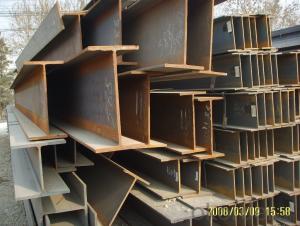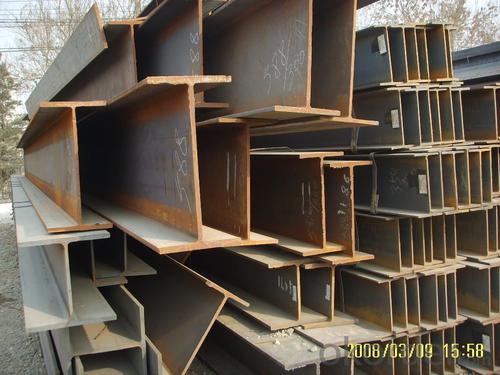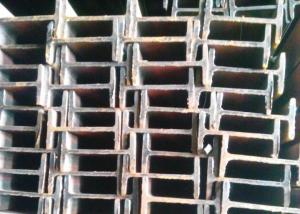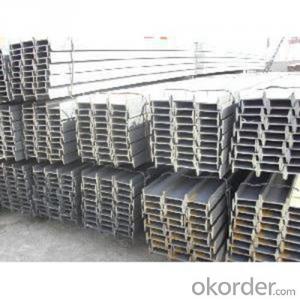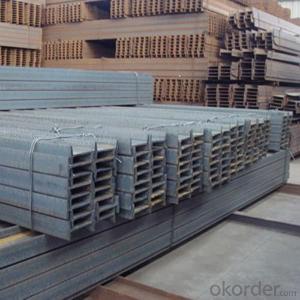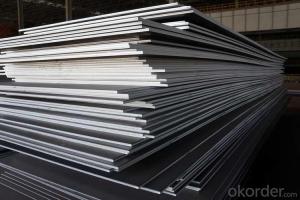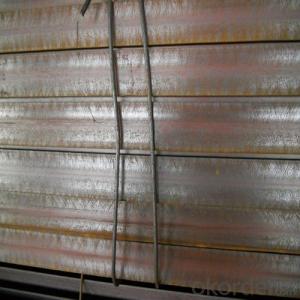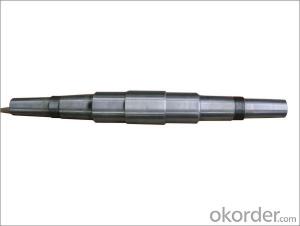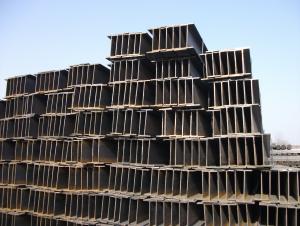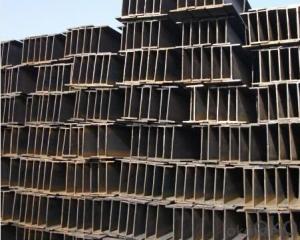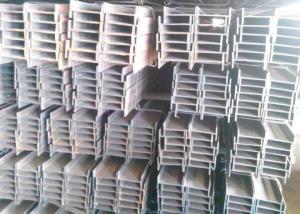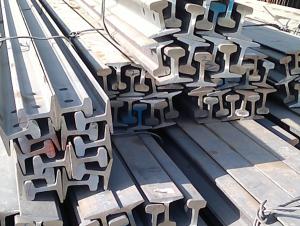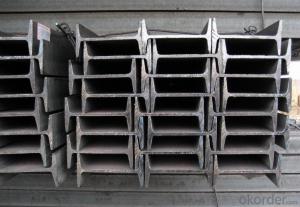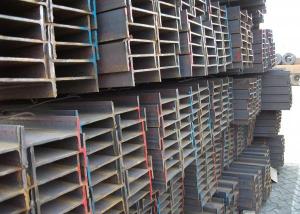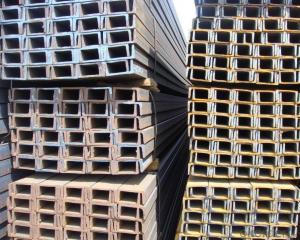High Quality Hot Rolled Structural Steel I Beams
- Loading Port:
- China main port
- Payment Terms:
- TT or LC
- Min Order Qty:
- 50 m.t.
- Supply Capability:
- 100000 m.t./month
OKorder Service Pledge
OKorder Financial Service
You Might Also Like
Specifications of High Quality Hot Rolled Structural Steel I Beams
1. Invoicing on theoretical weight or actual weight as customer request
2. Length: 5.8m, 6m, 9m, 12m as following table
3. Sizes of Steel I-Beams: 80mm-270mm
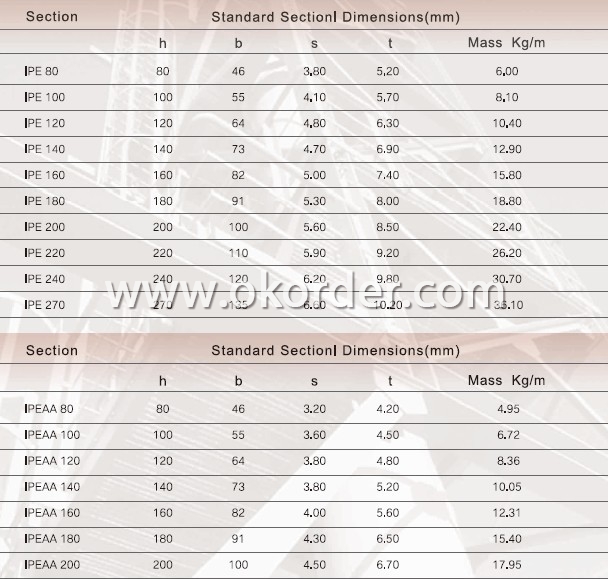
Dimensional Specifications of Steel I-Beams: EN10025, ASTM, GB Standard, JIS, etc.
Material Specifications of Steel I-Beams: EN10025, S235JR, GB Q235B or Equivalent
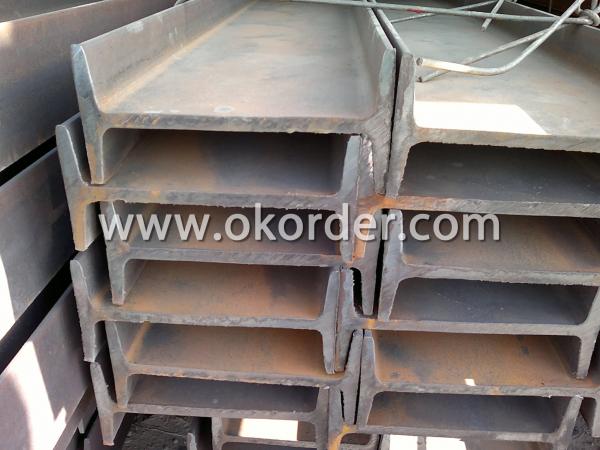
Applications of High Quality Hot Rolled Structural Steel I Beams
Commercial building structure
Pre-engineered buildings
Machinery support structures
Prefabricated structure
Medium scale bridges
Package & Delivery of High Quality Hot Rolled Structural Steel I Beams
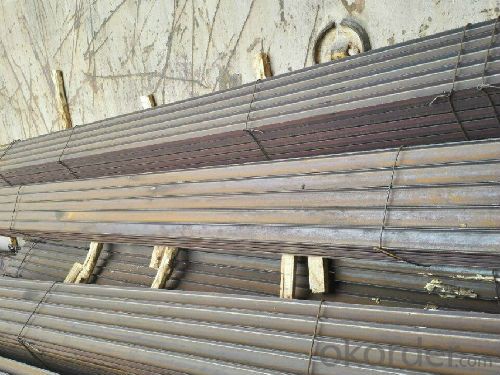
1. Package: All the products are packed in bundles and tied by steel wire rod then put into containers or in bulk cargo. Each bundle of I-Beam will be hung with the markings of CNBM or as the requriements of the customer. Each bundle contains about 50 pieces.
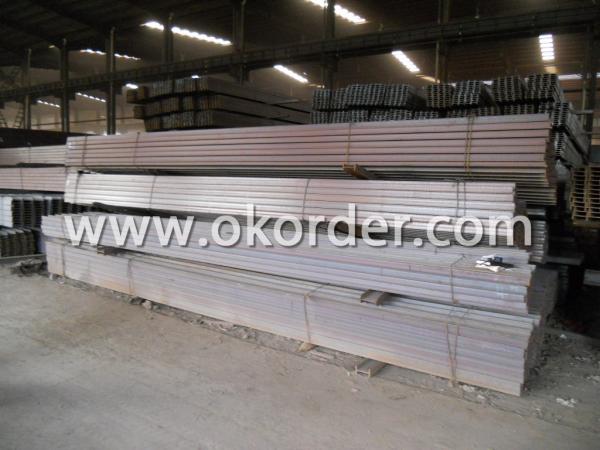
2.Tag mark: there will be tag mark tied up on the bundles. The information usually including supplier logo and name, product name, made in China, shipping marks and other information request by the customer.
If loading by container the marking is not needed, but we will prepare it as customer request.
3. Delivery: The Steel I-Beams will be delivered to the loading port in 45 days after receiving your advance payment or the original L/C at sight.
4. Transportation: the goods are delivered by truck from mill to loading port, the maximum quantity can be loaded is around 40MTs by each truck. If the order quantity cannot reach the full truck loaded, the transportation cost per ton will be little higher than full load.
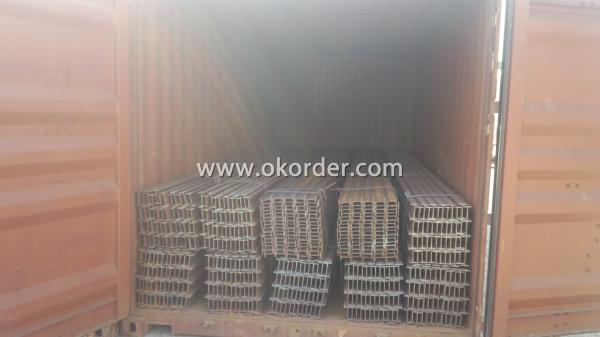
- Q: How do I connect two lengths of I-beam?
- A butt weld of 45 degrees is ok. The quality requirement of welding seam is level 1.
- Q: Can steel I-beams be used in residential flooring systems?
- Yes, steel I-beams can be used in residential flooring systems. Steel I-beams are commonly used in construction due to their strength and durability. They are able to support heavy loads and span long distances, making them suitable for use in residential flooring systems. Additionally, steel I-beams are fire-resistant and do not warp or shrink like wood, providing a stable and secure foundation for the flooring. However, it is important to note that the use of steel I-beams in residential flooring systems may require additional considerations such as proper installation, insulation, and soundproofing to ensure a comfortable and safe living environment. Consulting with a structural engineer or construction professional is recommended to ensure the proper design and implementation of steel I-beams in residential flooring systems.
- Q: Are steel I-beams suitable for supporting rooftop gardens with water features?
- Depending on several factors, rooftop gardens with water features can potentially be supported by steel I-beams. The strength and load-bearing capabilities of steel I-beams are well-known, making them a popular choice for structural support in construction projects. When assessing the suitability of steel I-beams for supporting rooftop gardens with water features, it is crucial to consider the weight and load distribution of the garden and water features. This includes evaluating the weight of the soil, plants, water reservoirs, and any additional structures like ponds or fountains. Steel I-beams are specifically designed to withstand heavy loads, and by employing proper engineering and calculations, they can be appropriately sized and positioned to support the weight of a rooftop garden with water features. However, it is imperative to seek the guidance of a structural engineer or a qualified professional to ensure the steel I-beams are designed and installed correctly to meet the specific requirements of the rooftop garden. Various factors, such as the size and span of the I-beams, the distance between supports, and the overall structural integrity of the building, must all be taken into account. Additionally, the potential for water leakage or excess moisture should be evaluated to prevent any potential harm to the steel beams. Furthermore, regularly maintaining and inspecting the steel I-beams is crucial to ensure their ongoing suitability for supporting rooftop gardens with water features. Regular checks for signs of corrosion, instability, or any structural issues should be conducted to uphold the safety and stability of the rooftop garden. In conclusion, steel I-beams can potentially be suitable for supporting rooftop gardens with water features. However, consulting with a structural engineer or a qualified professional is vital to guarantee proper design, installation, and maintenance, thereby ensuring the safety and stability of the structure.
- Q: What are the different factors that affect the strength of steel I-beams?
- The strength of steel I-beams is influenced by several factors, including the material properties of the steel, such as its yield strength and tensile strength. The dimensions of the beam, such as its height, width, and thickness, also play a significant role. Additionally, the method of fabrication, including the welding or riveting process, and the design of the connections between beams can impact their strength. Finally, external factors like loading conditions, temperature, and corrosion can also affect the strength of steel I-beams.
- Q: How do engineers determine the appropriate size and type of steel I-beam for a project?
- Engineers determine the appropriate size and type of steel I-beam for a project by considering various factors such as the load requirements, span length, and structural design. They analyze the expected loads and forces that the beam will experience, including dead loads (weight of the structure itself), live loads (occupancy and usage), and environmental loads (wind, seismic activity). By performing calculations and simulations, engineers can determine the maximum bending moment, shear force, and deflection the beam will endure. They then refer to structural design codes and standards, such as the American Institute of Steel Construction (AISC) Manual, to select a suitable size and type of steel I-beam that can safely support the anticipated loads while meeting the desired structural performance.
- Q: What are the different types of steel connections for I-beams?
- Different types of steel connections are available for I-beams, each serving a specific purpose and offering unique advantages. Some commonly used steel connections for I-beams include the following: 1. I-beams can be connected using welding, which involves melting the metal surfaces and joining them with a filler material. Welded connections provide excellent strength and stiffness, making them suitable for heavy-duty applications. 2. Bolted connections involve using bolts, nuts, and washers to secure the I-beams together. This type of connection offers flexibility as it allows for disassembly and reassembly, making it ideal for situations that require easy maintenance or modification. 3. Riveted connections use rivets to connect I-beams. This method involves drilling holes through the flanges and webs of the beams and inserting rivets to hold them together. Riveted connections are known for their high strength and durability, making them suitable for structural applications. 4. Pinned connections use pins to connect the I-beams. This type of connection allows for rotational movement between the beams, making it suitable for situations where flexibility and movement are required, such as in trusses or roof structures. 5. Moment connections are designed to transfer bending moments between I-beams. These connections are typically used in structures where a high level of rigidity is required, such as in multi-story buildings or bridges. Moment connections can be either welded or bolted, depending on the specific application. 6. Splice connections are used to join two I-beams together to create longer beams. This type of connection is often used when longer lengths of beams are required but cannot be obtained in a single piece. Splice connections can be welded, bolted, or riveted, depending on the design requirements. It's important to consider various factors, such as structural requirements, load-bearing capacity, ease of installation, and maintenance considerations, when choosing a steel connection for I-beams. Consulting with a structural engineer or steel fabrication specialist is recommended to determine the most suitable connection type for a specific application.
- Q: Are steel I-beams environmentally friendly?
- Steel I-beams can be considered relatively environmentally friendly compared to other construction materials. Steel is a highly recyclable material, and the production of steel I-beams often includes a high percentage of recycled content. Additionally, steel is durable and has a long lifespan, which means that steel I-beams require less maintenance and replacement over time. This reduces the overall environmental impact of construction and minimizes waste. However, it is important to consider the energy-intensive process of manufacturing steel, which can contribute to greenhouse gas emissions. Nevertheless, the recyclability and durability of steel I-beams make them a preferable choice for many construction projects seeking to achieve sustainability goals.
- Q: Can steel I-beams be used for modular bridges or flyovers?
- Yes, steel I-beams can be used for modular bridges or flyovers. Steel I-beams are commonly used in the construction industry due to their strength, durability, and versatility. They are capable of bearing heavy loads and providing stability, which makes them suitable for various applications, including bridge construction. Modular bridges or flyovers are often designed to be prefabricated in sections and then assembled on-site, allowing for a faster and more efficient construction process. Steel I-beams are well-suited for modular construction as they can be easily fabricated to the required specifications and transported to the site for assembly. The use of steel I-beams in modular bridge or flyover construction offers several advantages. Firstly, steel is a lightweight material compared to alternatives like concrete, making it easier and more cost-effective to transport and assemble. Additionally, steel I-beams can be designed to withstand different types of loads, such as the weight of vehicles or large crowds, ensuring the structural integrity and safety of the bridge or flyover. Furthermore, steel I-beams provide flexibility in terms of design and adaptability to different site conditions. They can be easily modified or extended if necessary, allowing for future expansion or modifications. Steel also possesses excellent resistance to corrosion, which is crucial for structures exposed to outdoor elements and harsh environmental conditions. In conclusion, steel I-beams are a suitable choice for modular bridges or flyovers due to their strength, durability, versatility, and ease of assembly. Their use ensures the construction of safe and reliable structures that can withstand heavy loads and adapt to changing requirements.
- Q: What are the different aesthetic options available for steel I-beams?
- There are several aesthetic options available for steel I-beams to enhance their visual appeal and integrate them seamlessly into architectural designs. Some of the popular aesthetic options include: 1. Powder Coating: Steel I-beams can be powder coated with a wide range of colors and finishes, allowing them to match or complement the surrounding environment or architectural elements. This process not only adds a layer of protection against corrosion but also provides a durable and attractive finish. 2. Galvanization: Galvanizing steel I-beams involves applying a layer of zinc coating to protect against rust and corrosion. This option gives the beams a distinctive silver-gray appearance, which can add an industrial or contemporary aesthetic to the overall design. 3. Polishing: Polishing steel I-beams creates a smooth and reflective surface, giving them a sleek and modern look. This option is often used in contemporary architectural designs where a high-end, luxurious feel is desired. 4. Brushed Finish: A brushed finish involves creating a pattern of fine lines on the surface of the steel I-beam. This option can provide a unique texture and a more tactile experience, making it a popular choice for designs that aim to incorporate an element of artistic expression. 5. Custom Paint or Coating: Steel I-beams can also be customized with specific paint colors or coatings to match the desired aesthetic. This option allows for creativity and personalization, making it an excellent choice for projects that require a specific color scheme or branding. It's important to note that the choice of aesthetic options for steel I-beams may vary depending on the manufacturer, project requirements, and budget constraints. Consulting with professionals such as architects, engineers, or steel fabricators can provide valuable insights and recommendations on the best aesthetic options available for steel I-beams in a particular project.
- Q: Are steel I-beams prone to sagging over time?
- Steel I-beams are highly resistant to sagging over time due to their inherent strength and load-bearing capabilities. The structural integrity and durability of steel make it a reliable material choice for constructing I-beams, ensuring minimal to no sagging concerns in the long term.
Send your message to us
High Quality Hot Rolled Structural Steel I Beams
- Loading Port:
- China main port
- Payment Terms:
- TT or LC
- Min Order Qty:
- 50 m.t.
- Supply Capability:
- 100000 m.t./month
OKorder Service Pledge
OKorder Financial Service
Similar products
Hot products
Hot Searches
Related keywords
